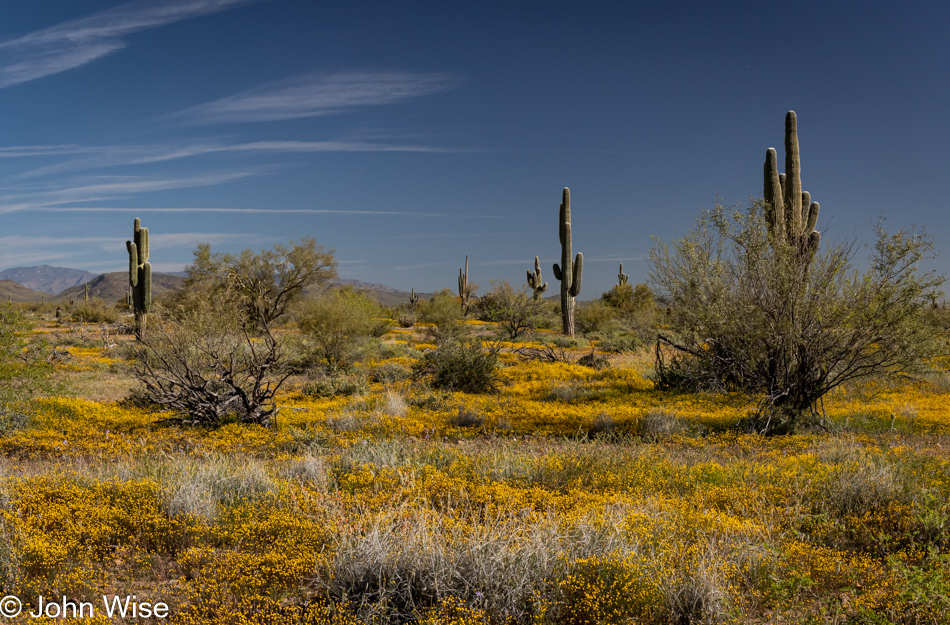
Avoid all highways, embrace empty spaces, and drive so slow that the tortoises and lizards pass you by. Our wandering route promised to require no less than seven hours before we’d arrive in Shoshone, California, outside of Death Valley National Park, but when taking the backroads, there’s a good chance of frequent fortuitous stops to collect visual souvenirs seemingly lying in wait for a collision with seeking eyes and thoughts that may or may not give them context.

Similar to the rarity of wildflowers carpeting the desert, encountering a long-closed store is an uncommon sight for people living in an economically viable neighborhood. As I started to write that sentence, it occurred to me that I needed to point out the economically viable part because I know firsthand that those who live in the blighted areas of America’s cities are all too familiar with abandoned buildings that once provided local services. To my eyes, though, they are a novelty that draws me in to capture the current state of a facade that apparently has been neglected since between 2007 and 2012 (based on a poster in the window showing the price for a pack of Marlboro as $5.39 which coincides with that aforementioned time frame). So, while the town looks the worse for wear due to this decaying artifact of the past, up the street, Family Dollar swooped in and, while offering what is likely a greater choice of goods, declined to assume the cost of tearing out this eyesore.
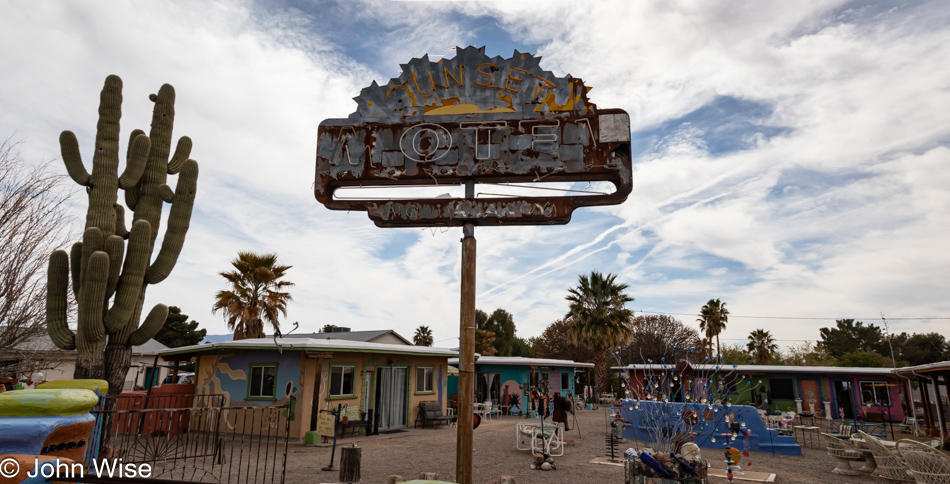
On the other hand, take the Sunset Motel further west in the town of Wenden, Arizona. Years ago, it was an abandoned hulk collecting cobwebs and graffiti, while today, it has been converted into an artists’ colony. With so much road ahead of us, we felt that our time would be better spent covering said road and considered that maybe a day trip out this way might be in order to better explore these towns we rarely visit.

It has been about 20 years since we last stopped at this place next to the road in Salome, Arizona, wondering what it once was, and to this day are still intrigued that the tie-ups for horses are still standing.

Well, Bouse, Arizona, must be going to hell because the first time we passed through here, the sign read that they’d gone from 3 to 4 grouchy people among the 875 inhabitants. That it’s grown to 35 grouches suggests the quality of life has gone downhill.
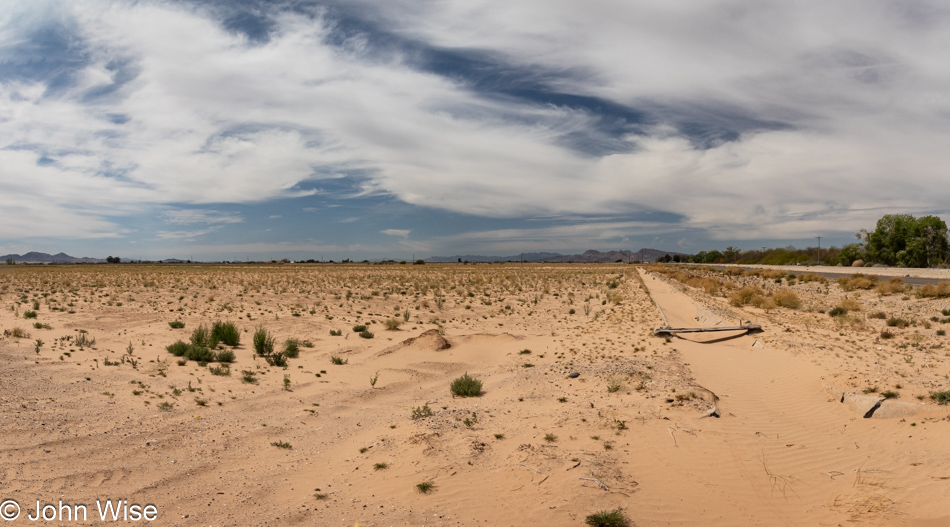
South of Parker, Arizona, along the Colorado River, lives a tribe of Indians called the ‘Aha Havasuu, made up of various other groups, including the Mohave, Chemehuevi, Hopi, and Navajo. Just behind me is a canal full of Colorado River water being used to irrigate the land on that side, while on the far left, fire is being used to clear the remains of a depleted crop. Why the canal on the south side has been allowed to fill with sand is a mystery.
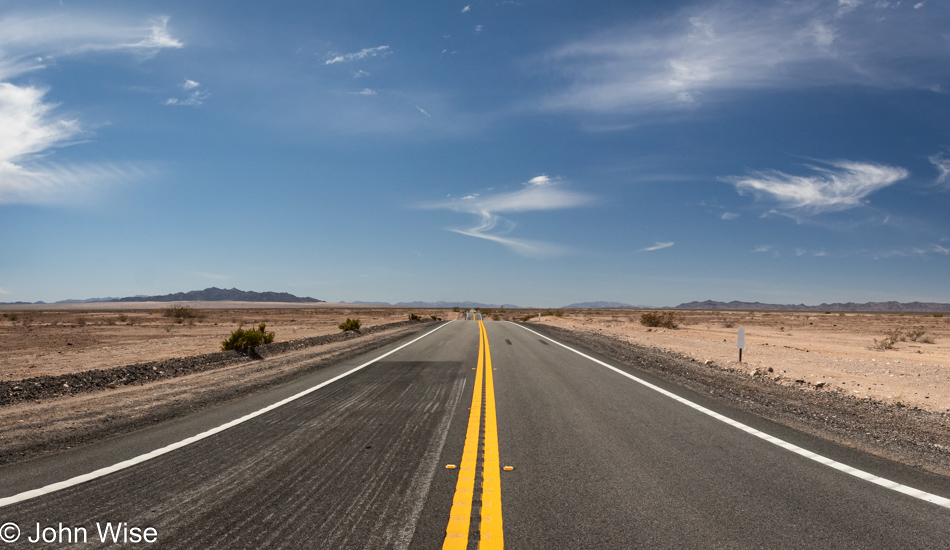
Now, in California, on Highway 62, we have about 100 miles ahead of us, but until we arrive at the outskirts of 29 Palms, we have a wide-open desert to drive across.
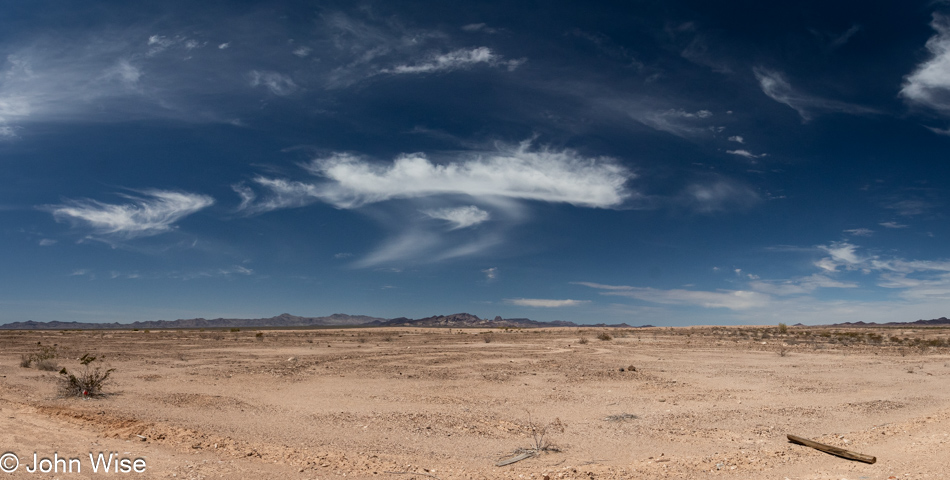
Along the way, we’ll see sand, rocks, dirt, shrubs, whispy clouds, deep blue skies, trash, and a lot of asphalt.

What we didn’t expect to find was a peculiar variation of the shoe tree. Here in Rice, California, at the remnants of an old gas station, the shoes of passers-by who made a donation to the roof are covering the spot where the pumps would have once stood. It turns out that there used to be an underwear tree that had taken shape on a dead tamarisk tree, but it and the underwear burned, and with what was left, a shoe tree took root before another fire burned everything to the ground. There are a few other works of art close by: someone decorated a shrub with COVID masks, and a wall is covered in graffiti. Apparently, there’s also a shoe fence out here, but we missed that one, creating a solid reason to return one day.

This signpost out near Rice, easily identifiable as a signpost, features pointers to names, things, or places beyond my simple ability to comprehend just what they are pointing to.

Out there, somewhere beyond the horizon, are unknown sights waiting to be seen by eyes that haven’t yet seen what lies in places they’ve never visited. While the road looks relatively well-traveled, it’s obviously not a thoroughfare, nor is it a boulevard or a destination that has the kind of pull that can illicit the common influencer to venture into its still hidden secrets.

And then, around the corner, we are delivered into an abundance of more nothingness that is, in reality, a misnomer because anyone can easily see that everything is found here. The peculiar nature of people missing what could be perceived as a cruel joke because everything is within their minds. Desolation is a state of an empty mind that doesn’t allow the spoonfed person the usage of their imagination to understand that they are nearly always looking at the most immense beauty that contains all the gravity of life they will ever know but can’t quite understand. Would this space somehow gather more value if there were someone in an evocative pose and clothing? For the simple-minded, that is precisely what they require for a location to assume value; that is a tragedy larger than the breadth of this desert.

There was a time in the golden age of travel, a time I’ve not personally lived through but of which I have some awareness thanks to older family members who shared stories about seeing the exotic sites out west along Route 66, some of the best experiences one might hope to capture. Likewise, for those from out west, going to New York City, Niagara Falls, or Florida could be the vacation of a lifetime. So here we are in Amboy, California, at Roy’s long-closed motel in the Mojave desert where probably everyone who passes by snaps a photo, and not one of us will ever get to eat at the cafe or stay the night without seeing our stop as a trophy having been collected. This begs the question, why should a side-of-the-road motel and cafe deserve this kind of recognition? It’s because we are nostalgic for normal stuff without understanding that in our age of conformity, where everything and everyone looks the same, these artifacts are hints of what’s been lost. Now consider that while these architectural relics are able to draw our attention, those capturing these moments can’t yet see their own ugly sameness as a part of the disappearance of anything we used to take for granted that was unique.

We are entering the Mojave National Preserve, where we are being requested in a humorous way to slow down. If ever there were people desiring to oblige a wish, this one speaks to our hearts. There was a time when we yearned to race into everything, which might be an artifact of evolution because if life is short, you’d better get all you can as quickly as can. Life spans are longer, yet people have less time for themselves as they divide their hours and days between jobs, getting to and from those jobs, consuming entertainment, and the consumption of things that are supposed to bring satisfaction while not offering any kind of purpose or growth. Distracted without intention or an idea that there could be a purpose aside from collecting, people race ahead to collect the trophy of participation.
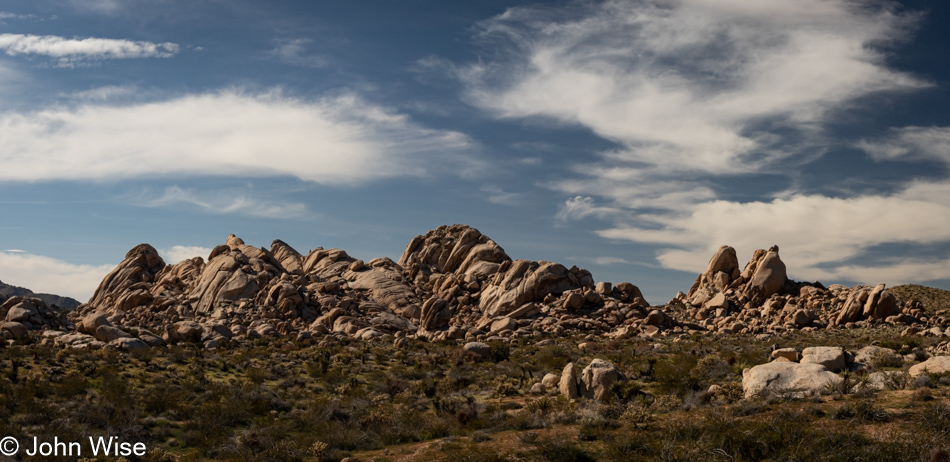
Without intention backed by curiosity to evolve one’s knowledge, the desolation of purposelessness takes over the landscape, and other than a single objective, nothing is found about the world around them or the world within. That type of person may have ended up racing over sand dunes, shooting some targets, reaching a peak, or skiing down a mountain, but everything between the culmination of the end goal and being locked back in their cocoon is the toil of futility as they had to endure the boring parts. They don’t understand that there are no boring parts.
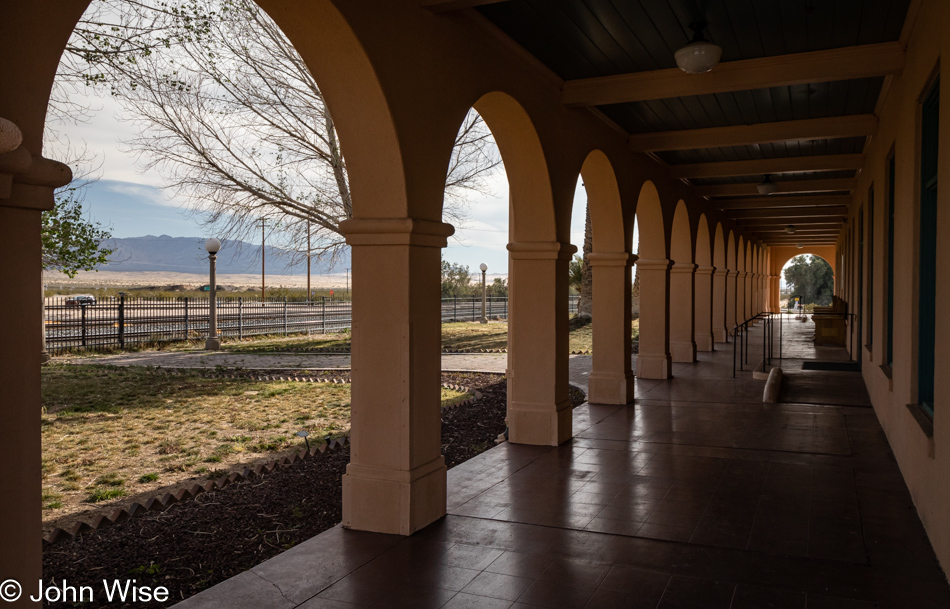
In gazing at our past that no longer has a function apart from serving as a sad reminder that our present is absent of authenticity, we look through a prism of uncertainty, not recognizing that this empty space is reflecting the desolation of our minds. For about 80 years, the Kelso Depot served workers and travelers as a rest and refueling stop on a line that ran between Salt Lake City, Utah, and Los Angeles, California. Today, there’s no hint of their shadows, voices, or footsteps that carried them into a place in the middle of nowhere they needed to be, unlike current visitors who are trying to figure out what the attraction is of visiting something that once had a purpose and now only serves as a reminder of something from an era we hardly understand.

Soon, all recollection of who we were or are will be gone as we fade out of relevancy due to not wanting to know who we are. As a species, we held the potential to be more than the appearance of a thing; we had cognizance and a desire to adorn ourselves with the artifacts of crafts learned and mastered, from jewelry to music and words. Today, we purchase what others tell us will complete us; we borrow mannerisms and use pre-ordained colloquial jargon that demonstrates our membership in the club of cool hipster culture in order to buy instant influencer cred. That moment where we luxuriate in the pretentious, artificially contrived place known as Flash-in-the-Pan soon dumps everyone out at the end of the intersection of Uh-Oh and Oh-Shit. If we are fortunate, we rapidly adapt and jump into the vehicle of Remain-in-Childhood; otherwise, it’s off for a bumpy road trip down the Existential Crisis Highway.

In the numbness of oblivion where desolation dwells, a chemically induced existence invites those who embrace banality to flutter about the light as they, on occasion, crash into the margin of awareness. For those determined to weather the heat of curiosity, we have few beacons to guide or warn us of impending collisions that may temporarily derail our ambition to go it alone. We are not here to pose for you; we are here to remind ourselves that when the opportunity arose for us to leave convenience and laziness behind, we accepted the challenge to witness our wandering across the space between, and if it were a flower, a ruin, or the world’s largest thermometer, we were on-hand to consider where it might fit in the encyclopedia of our experiences.
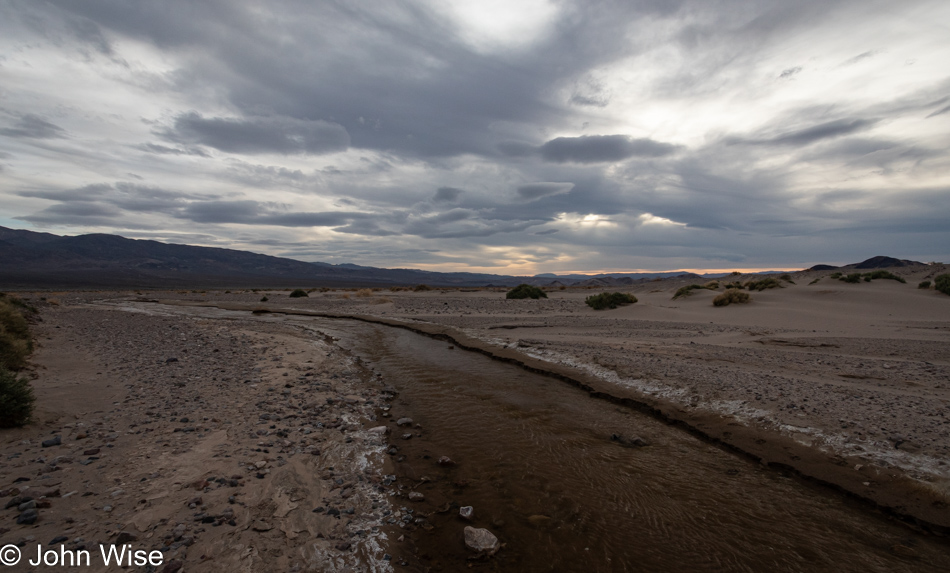
It’s likely easier to understand that this water will flow into another stream or river and that it might end up in a lake or the ocean while understanding our own flow is a non-stop mystery of guesswork, or so it seems. We, too, are flowing, flowing into a life that will end up in a metaphorical ocean of all life that has been. If this feeds the life of what is yet to be, that is left beyond the horizon of my comprehension as I can only take the perspective of where I am from the place I’m at in the current of any given moment. What I do know is that I’m still in constant motion; I’ve not pulled up to the edge of the stream trying to delay where I’m going because stopping my travels would risk being absorbed by the thirsty desert, or I might simply evaporate. Either way, my journey will have ended prematurely and so I must keep going and going.

If you thought you were going to read about desolation and our travels into nothingness, you must be the naive type of person who’s convinced themself that something like nothing is even possible. I’m not here to offer affirmation about your shortsighted delusions; you should stick to your couch/computer chair, where electronic media are the wildflowers that talk to your soul. We refuse to wallow in pity for the things we cannot see and do or can’t afford as we take off driving into the biggest adventures ever offered to humanity. Sure, one could point out the obvious that this is no Paris, Kilimanjaro, Everest, or Hawaii, but that would be silly because we went somewhere better; we traveled in love, looking for beauty found in everything we looked at.
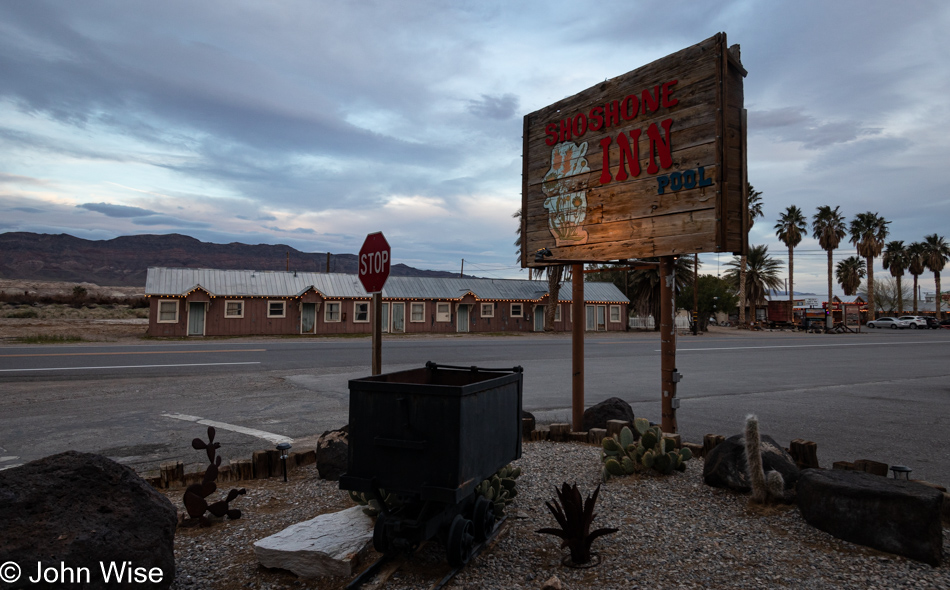
It was 16 years ago when we first pulled into the Shoshone Inn just a few miles outside of Death Valley National Park, and since that time, we always make an effort to stay here. Are these luxury accommodations? Heck no, at least not to what others might think, but for the two of us, this is the height of luxury. First of all, it’s about half the price of a room in the park. Secondly, the Crowbar Cafe & Saloon is across the street, and although they don’t open until 8:00 in the morning, they are open until 9:00 p.m., so no matter what time we leave the park, the Crowbar is going to be cooking our dinner. But this doesn’t touch on the most important aspect of staying here, and that’s the soaking pool nearby. You see, this pool is no ordinary resort pool. It is a concrete enclosure fed by a nearby hot spring with water in a temperature range of 100°F to 104°F (38°C to 40°C) year-round.
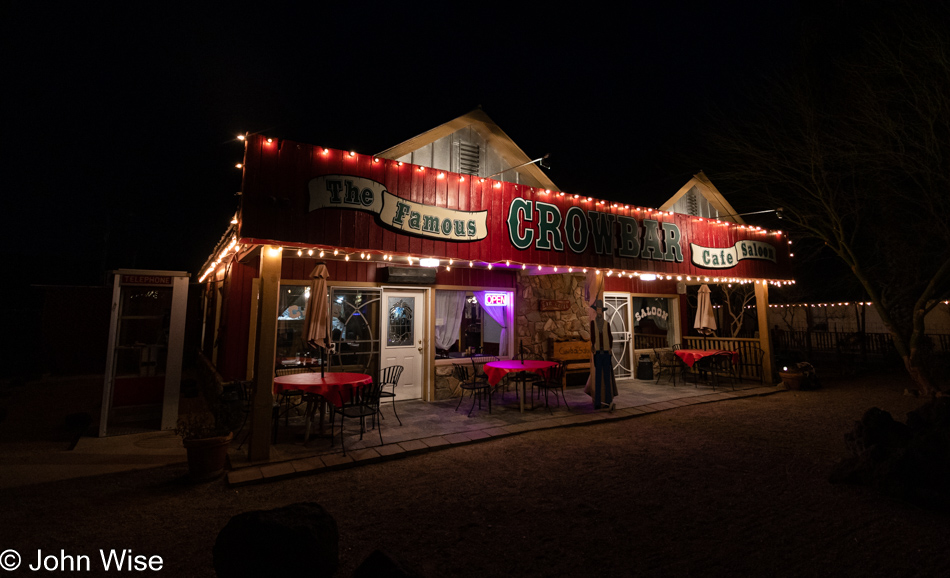
Do not look for gourmet food at the Crowbar, but then again, who’d ever think a place with this name would feature that type of cuisine? We are not into this for a culinary experience; for those desiring that experience, check out The Inn in Death Valley, where you can dine on a $150-a-person meal before retiring to your $400-a-night room. Not that there’s anything wrong with that, but we want something more, considering the harsh nature of the place we are visiting.
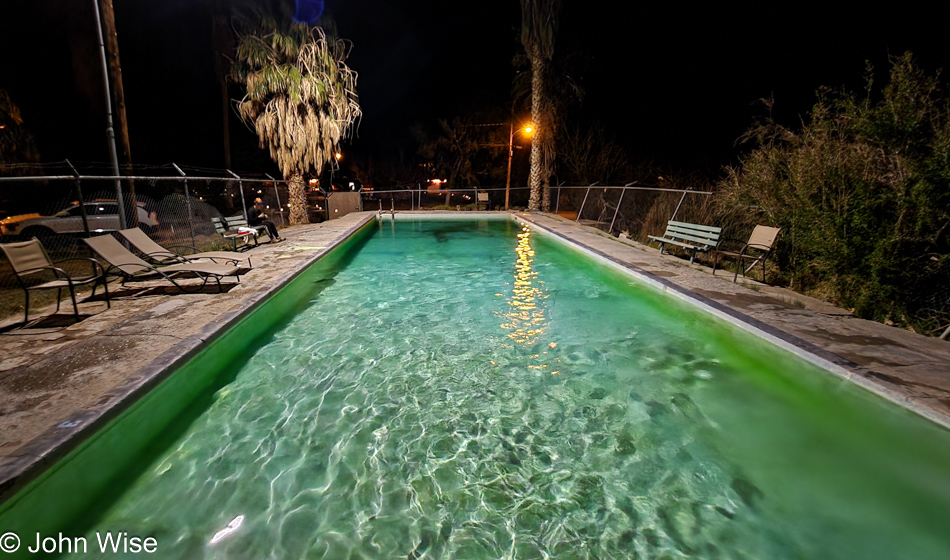
After our patty melts made of rusty nails and lizard cheese, we headed up the dark, dark road to the hot spring pool where the acidic waters flowing out of Death Valley scoured four layers of skin off our aging bodies, making us look 11.5 years younger. About these waters, one should consider that they are likely remnants of ancient lakes fed by the intermittent Amargosa River that once flowed into Lake Manley in Death Valley and Lake Tacopa near Shoshone before seeping into nearby aquifers. The research that has me writing this inspires thoughts of a quick return to the area again this year to trace the flow of the Amargosa near Beatty while trying to piece together the history of this part of Death Valley. Time to crawl into our bed made of plywood and snuggle up under the World War II-era wool blanket, as we call it a night of roughing it here in the desolation of absolutely nowhere.
Das ist wahnsinnig beeindruckend. Ihr macht so tolle Touren. Ich liebe eure Fotos, besonders die Selfies.